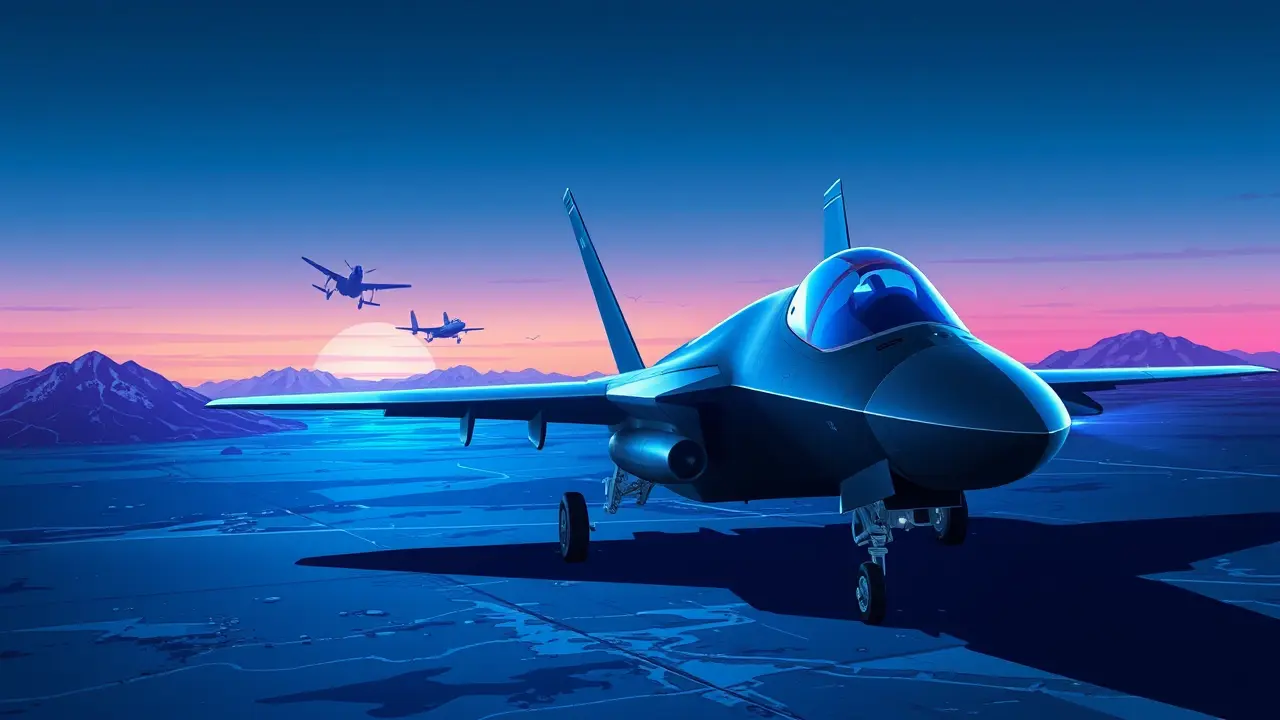Denmark Boosts Military in Greenland with New Ships and Jets.
In a strategic maneuver echoing the geopolitical chess games of the Cold War, Denmark has announced a significant military bolstering of its defense capabilities for Greenland, a move that cannot be divorced from the lingering specter of former U. S.President Donald Trump’s expressed interest in purchasing the vast, resource-rich territory. The Danish government’s procurement plan, a substantial investment in national sovereignty, centers on the acquisition of advanced US-made F-35 fighter jets and a new fleet of naval vessels, explicitly tasked with patrolling and defending the Arctic approaches to the world’s largest island.This decision is far more than a simple military upgrade; it is a profound statement of intent in an increasingly contested polar region, where melting ice caps are unlocking new sea lanes and exposing untapped reserves of oil, gas, and rare earth minerals, drawing the attention of global powers from Russia to China. The timing and nature of this reinforcement are deeply symbolic, serving as a direct rebuttal to the transactional view of sovereignty that characterized the Trump administration, which infamously and casually floated the idea of a real estate deal for Greenland, an autonomous Danish territory, in 2019—a proposition met with bewilderment and a swift, firm rejection from Copenhagen.This historical precedent, reminiscent of past great power ambitions, underscores that Greenland is not for sale; it is a sovereign Danish responsibility, and this military package is the tangible proof. The F-35, a fifth-generation multirole stealth fighter, represents a quantum leap in capability, providing Denmark with an unparalleled ability to monitor its vast Arctic airspace, deter incursions, and, if necessary, project power in a region where Russia has been systematically reopening Soviet-era military bases and conducting regular military exercises.The new ships will be equally critical, tasked with the immense challenge of surveilling a coastline longer than that of the entire United States, combating illegal fishing, and asserting control over the burgeoning Northwest Passage. Analysts view this as a calculated step to align Denmark more closely with NATO’s strategic pivot towards the Arctic, a region once considered a frozen backwater but now recognized as a critical frontier for 21st-century security and economic competition.The move also carries complex domestic implications, strengthening Denmark’s hand in its delicate relationship with Greenland’s home rule government, which ultimately controls the island’s vast natural resources and has its own aspirations for full independence. By demonstrating a firm commitment to Greenland’s defense, Copenhagen aims to reinforce the bonds of the realm while simultaneously preempting any external power from exploiting internal political dynamics.However, this militarization of the High North is not without its risks; it could accelerate an Arctic arms race, provoking counter-moves from Moscow and potentially complicating diplomatic efforts on other fronts. The financial commitment is staggering, reflecting a new reality where national security is increasingly defined by the ability to operate in the most extreme environments on Earth. In the grand historical narrative, this moment will be recorded as the point when the abstract geopolitical tensions of the Arctic crystallized into concrete, hardware-driven policy, a modern-day echo of the great naval buildups of prior centuries, where the projection of power was the ultimate guarantor of territorial integrity against the ambitions of rival empires.
It’s quiet here...Start the conversation by leaving the first comment.
© 2025 Outpoll Service LTD. All rights reserved.
